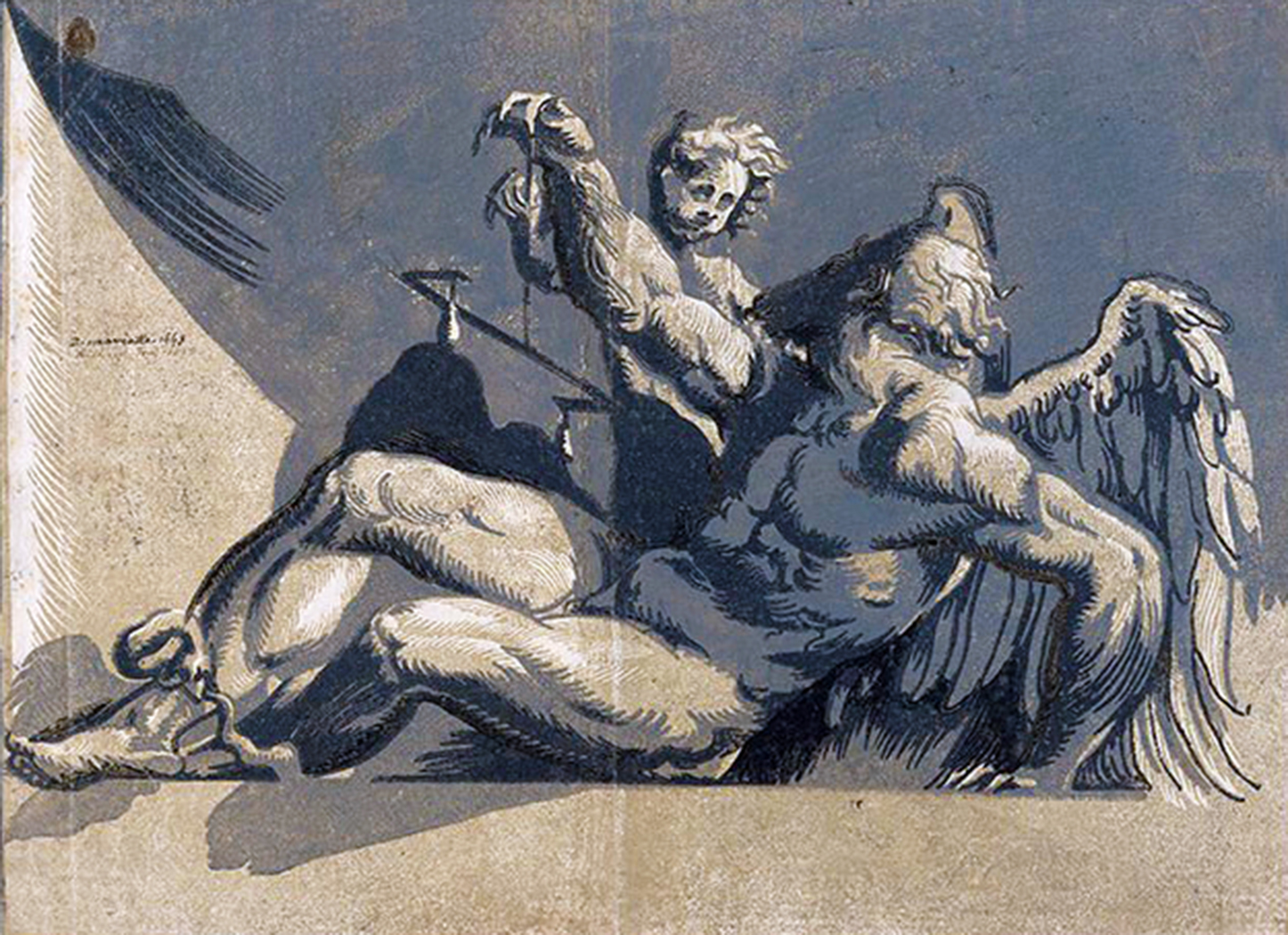Chiaroscuro woodcuts are among the rarest and most beautiful prints that flourished throughout 16th century Italy. The first comprehensive study devoted to this subject will be presented by the National Gallery of Art in Washington, D.C., beginning October 14th. “The Chiaroscuro Woodcut in Renaissance Italy” casts new light on the beginnings of this remarkable art form. Although highly regarded through the centuries, this complex process has remained one of the least understood phenomena of early printmaking. Historical and technical research carried out during the last decade have added new revelations to this art form.
The chiaroscuro woodcut, which took its name from the Italian term for modeling in light and shadow, involved the superimposed printing of multiple woodblocks that were accurately aligned and inked in different gradations of a color. The history of the technique in Italy began with Ugo da Carpi (c. 1468/1470–1532), who, in 1516, claimed he had discovered a “new method of printing in chiaro et scuro.” His chiaroscuros established the foundation for the technique that flourished in Italy through the Renaissance. Ugo da Carpi went on to collaborate with Parmigianino on the masterwork Diogenes, an unparalleled achievement in the technique’s history.
Over the course of the 16th century, the technique engaged such celebrated painters and draftsmen as Titian, Raphael and Parmigianino and underwent sophisticated advances in the hands of talented printmakers active throughout the Italian peninsula. Embraced as a means of disseminating designs and prized as works of art in their own right, these prints exemplify the rich imagery, artistic innovation and technical virtuosity of the Italian Renaissance.
The National Gallery of Art in Washington, D.C. has arranged its exhibition following the broad chronological evolution of the art form, bringing new attention to the materials and means of production. The exhibition presents the principal chiaroscuro workshops, with several pieces displayed in different color palettes. The exhibition will present 100 of the finest impressions from collections in the United States and Europe, through January 20, 2019.
The National Gallery of Art and its Sculpture Garden is free to the public and is located on the National Mall between 3rd and 9th Streets at Constitution Avenue NW. For more information visit their website at www.nga.gov.





